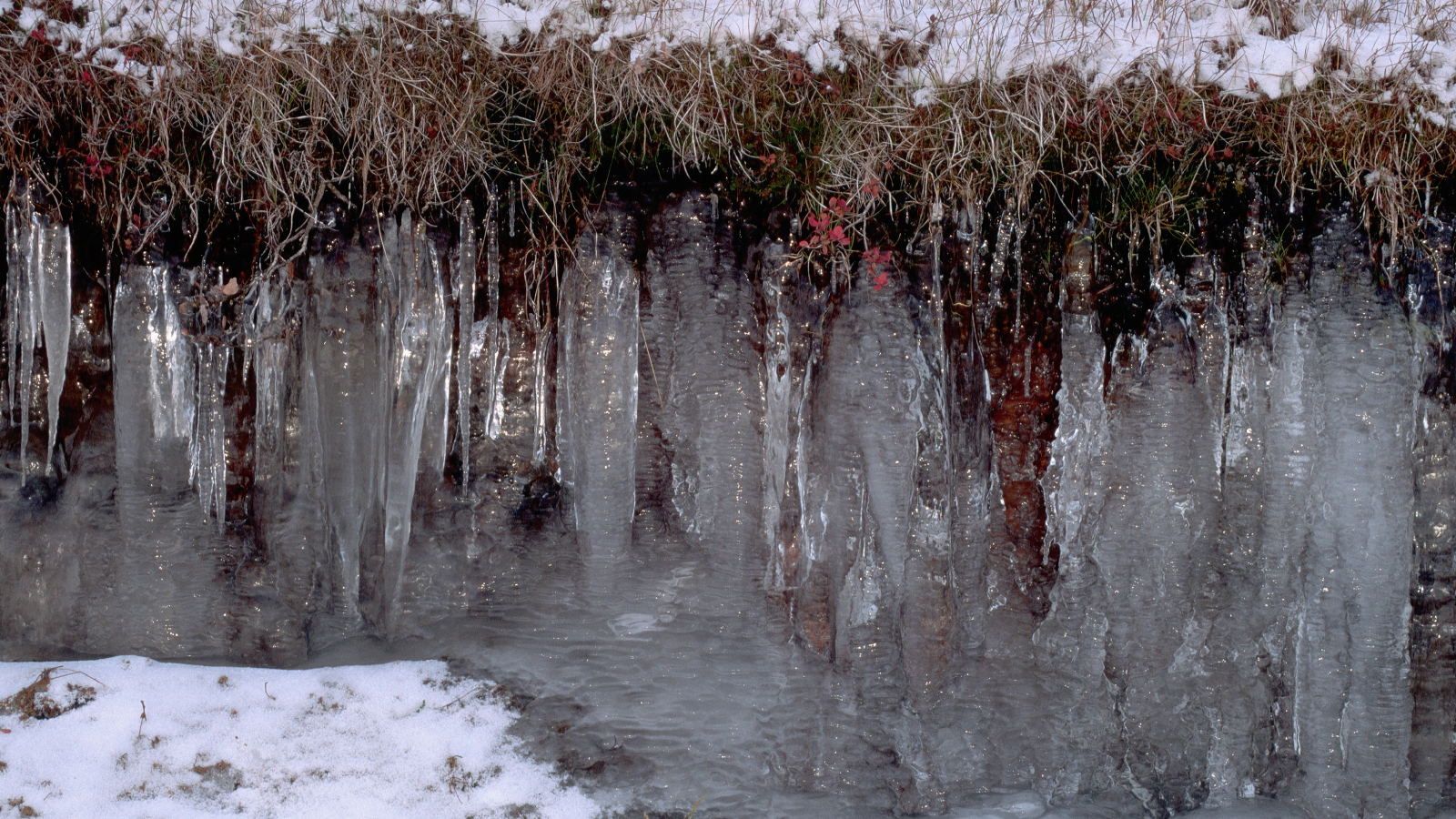Thawing Arctic permafrost could release radioactive, cancer-causing radon
As permafrost melts as a result of climate change, it may release more radon, a colorless, odorless gas linked with lung cancer.

Thawing permafrost in the Arctic could release radon, a radioactive gas that has the potential to cause cancer, scientists have warned.
The permafrost that keeps the ground frozen year-round in the Arctic acts like a cap that prevents a variety of gases from bubbling up into the atmosphere. The most famous of these is probably methane, a potent greenhouse gas that is released as the permafrost thaws, thereby accelerating climate change.
But in a new paper, published in the March issue of the journal Earth-Science Reviews, researchers note that there's another dangerous gas lurking under the Arctic permafrost: radon. This colorless, odorless gas is a step in the radioactive decay of naturally occurring uranium. It's known for sometimes accumulating inside homes, especially basements, thus raising the long-term risk of lung cancer for residents. According to the Environmental Protection Agency, radon is the second-leading cause of lung cancer in the United States, responsible for 21,000 deaths a year.
Right now, radon is not always a pressing problem in the Arctic or near-Arctic regions, where the ground remains frozen year-round. That's because permafrost keeps the gas from rising out of the soil, Paul Goodfellow, an environmental program specialist in geologic hazards at the Alaska Division of Geological & Geophysical Surveys, told Live Science. But as the permafrost melts, this protective shield disappears.
"There is some ongoing research, which seems pretty promising, to show how this permafrost might be potentially exposing homeowners to radon," said Goodfellow, who was not involved in the new study.
Goodfellow's work involves encouraging Alaska homeowners to test for radon, which can be a challenge given the state's sparse population density. Remote communities have limited mail service, he said, which makes it challenging to get test kits back to labs in the Lower 48 states to analyze them.
Sign up for the Live Science daily newsletter now
Get the world’s most fascinating discoveries delivered straight to your inbox.
"We're still at the level where we're trying to conduct enough tests to identify hotspots," he told Live Science.
In the new study, the researchers gathered previous studies on radon in permafrost regions, which include both Alaska and the mountains of Harbin, a province in northeastern China. The review suggests that permafrost degradation has the potential to allow radon to migrate into homes and workplaces, the researchers, led by Jian Cui of the Harbin Natural Resources Comprehensive Investigation Center of the China Geological Survey, wrote.
The research on radon migration in permafrost regions, however, is "grossly inadequate," they added.
Permafrost doesn't melt in an organized way, from the top down, said Art Nash, an energy specialist at the University of Alaska Fairbanks Cooperative Extension Service. Instead, it melts unevenly, opening up cracks and crevices. Seismic activity, which is common in Alaska, can also create new faults through which radon can travel.
"If you know where the uranium deposits were, you wouldn't be able to draw a straight line up with a ruler … With the nonuniform melting, you can't really tell where it's going to finally break through," Nash told Live Science.
There are also questions about how radon will interact with the other gases trapped beneath the permafrost, Nash said. The most worrisome of these is methane, a potent greenhouse gas that, if released in large quantities, could rapidly accelerate global warming. Another concerning one is methylmercury, a nervous-system-disrupting chemical that can accumulate in water and the tissues of animals in the food chain.
"How will those gases compete for the limited routes which will open up in the permafrost?" Nash said.
Answering those questions will be a long-term challenge, Goodfellow said. But more attention is on permafrost as the climate warms.
"Universities and government agencies are spending more money on it now that this has become a prevalent issue," he said. "Hopefully, over the next five to 10 years, we'll be seeing more data coming out."

Stephanie Pappas is a contributing writer for Live Science, covering topics ranging from geoscience to archaeology to the human brain and behavior. She was previously a senior writer for Live Science but is now a freelancer based in Denver, Colorado, and regularly contributes to Scientific American and The Monitor, the monthly magazine of the American Psychological Association. Stephanie received a bachelor's degree in psychology from the University of South Carolina and a graduate certificate in science communication from the University of California, Santa Cruz.










